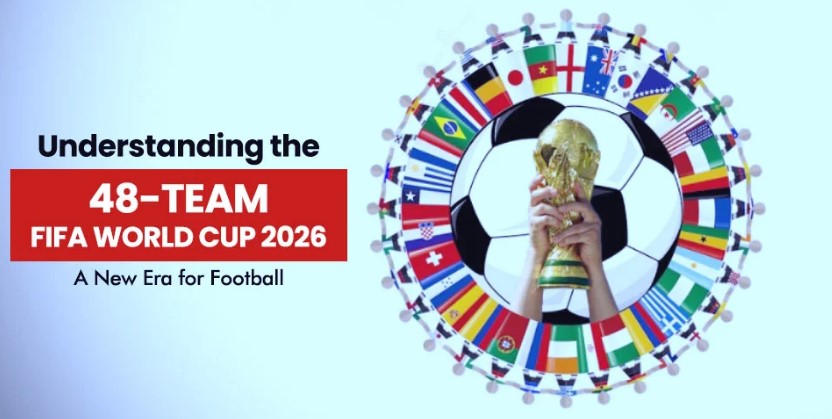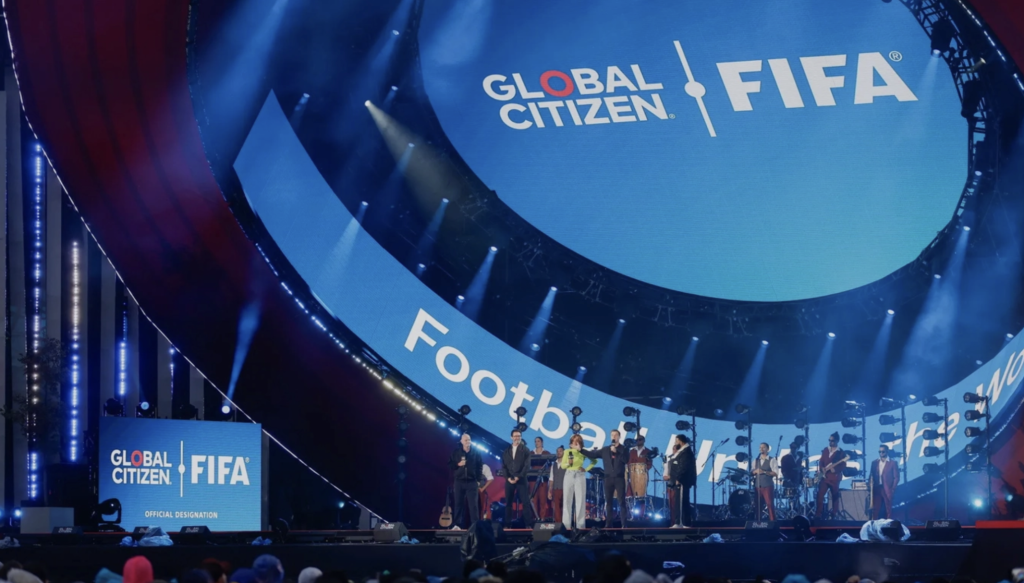
FIFA is expanding the World Cup to 48 teams in 2026—but what does that really mean for the tournament’s format, competitiveness, and global excitement?
A New Era for the Beautiful Game
The World Cup is the crown jewel of global football. Every four years, nations pause their differences and unite under one passion—the love for the game. But in 2026, something historic is happening. For the first time ever, the FIFA World Cup will feature 48 teams instead of 32. It’s a big leap, and not just in numbers.
So, what exactly does this expansion mean for the tournament we all know and love? Will it make the World Cup even more thrilling? Or will it water down the quality of play? Let’s break it down, one goal at a time.

📈 Why Expand to 48 Teams?
Let’s start with the obvious question: Why expand at all?
The decision isn’t just about football—it’s also about opportunity. More countries will now have a chance to play on the world’s biggest stage. Think of it as opening the gates to new stories, new dreams, and fresh rivalries.
Many nations that have never qualified for a World Cup will now have the chance to experience the magic. For fans in places like Central Asia, Africa, or the Caribbean, this change means more flags in the stadiums, more anthems echoing across cities, and more dreams realized.
And of course, a bigger tournament also means more games, more TV rights, and yes—more revenue.
📊 What Will the New Format Look Like?
Now here’s where things get interesting.
With 48 teams, the old 32-team, 8-group format simply won’t work. FIFA had to go back to the drawing board and redesign how the tournament flows.
🔹 Group Stage
Instead of 8 groups of 4, the 2026 World Cup will feature 12 groups of 4 teams. This keeps the traditional group-stage feel that fans are used to, where each team plays 3 matches.
From each group, the top two teams will advance, along with the eight best third-placed teams, making a total of 32 teams for the knockout stage.
Wait—did you catch that? That means the group stage is no longer just about finishing in the top 2. Even third place can still keep the dream alive!
More strategy. More chances. More surprises.
⚔️ Knockout Round: A True Battle Royale
Once the top 32 teams are decided, the knockout round begins. This is where legends are made. Every game is do-or-die.
With more teams in the mix, we’ll now have an extra knockout round, starting from the Round of 32. This adds more excitement, more drama, and potentially, more Cinderella stories.
Imagine a debut team making it past the group stage and going toe-to-toe with a powerhouse like Germany or Brazil. These moments make World Cup history.
📅 Tournament Length: Longer, but Worth It
Naturally, more teams mean more matches. The 2026 World Cup is expected to host over 100 matches, compared to the 64 in previous editions.
This will likely stretch the tournament from around 32 to 39 days, giving fans an extra week of football fever.
Some might argue that this could lead to player fatigue, especially for club players. But with proper planning, rest days, and larger squads, it could also mean deeper tactical battles and fresher lineups.
🌎 Global Representation Like Never Before
The biggest win from the expansion? Global inclusion.
Let’s look at the potential continental breakdown (subject to final approval):
- Africa: From 5 to 9 teams
- Asia: From 4.5 to 8 teams
- Europe: From 13 to 16 teams
- North America (CONCACAF): From 3.5 to 6 teams
- South America (CONMEBOL): From 4.5 to 6 teams
- Oceania: At least 1 guaranteed slot
This move gives football a wider reach. We might finally see nations like India, Uzbekistan, or Curaçao make their World Cup debut. That’s not just a stat—it’s a chance for millions of fans to feel represented on the world stage.
💬 Will the Quality of Matches Drop?
One of the biggest concerns critics raise is about the level of competition.
Will adding 16 more teams dilute the quality of the group stage? Will we see more lopsided matches?
It’s a fair question. But think about this: the so-called “smaller teams” have closed the gap in recent years. In past tournaments, underdogs like Morocco, Japan, and Croatia have stunned giants.
The expanded format could unleash even more surprise stories. With more nations involved, we might witness passionate teams who play with their hearts on their sleeves—and sometimes, that’s more entertaining than a tactical deadlock between two giants.
📍 Impact on Host Nations
Hosting a 48-team tournament is no small feat. Thankfully, the 2026 World Cup will be co-hosted by three countries: the USA, Mexico, and Canada.
That means
- More stadiums spread across cities
- Better travel infrastructure
- Diverse cultural experiences
From the electric streets of Mexico City to the modern arenas of Toronto, fans will be treated to a continental football carnival.
For local economies, the tourism boom will be massive. Hotels, restaurants, transport services, and souvenir shops will all thrive—a win-win for fans and hosts.
🤖 Will Technology Play a Bigger Role?
With an expanded format, FIFA may lean even more on technology for smooth operations:
- Digital tickets for crowd control
- Automated offside detection
- AI-powered scheduling tools
- VAR with improved consistency
As the scale grows, so does the need for efficiency—and technology will play a key part in making the 2026 edition feel futuristic and fan-friendly.
🙋 Frequently Asked Questions
Q1: Will more teams mean easier qualification for smaller nations?
Yes, the chances of qualification will increase for many countries, especially those in Africa, Asia, and Oceania.
Q2: How many matches will each team play in the group stage?
Each team will still play three group matches, just like previous tournaments.
Q3: Will it be harder to win the World Cup now?
Possibly. With more teams and an extra knockout round, the road to glory just got longer and more unpredictable.
Q4: Can fans still expect high-quality football?
Absolutely. While there may be a few uneven matchups, passion, preparation, and national pride will ensure competitive games.
✅ Conclusion: A Bold Step Into the Future
The 48-team World Cup isn’t just about numbers—it’s about inclusion, inspiration, and innovation.
Yes, the format will change. Yes, the tournament will be longer. But the essence of the World Cup remains: nations dreaming, players rising, and fans living every moment.
For some, it might feel like unfamiliar territory. For others, it’s the start of a long-awaited invitation to join the biggest celebration of football the world has ever seen.
Whether you’re cheering from the stands, watching from your living room, or flying your country’s flag for the first time—the 2026 World Cup promises to be unforgettable.



